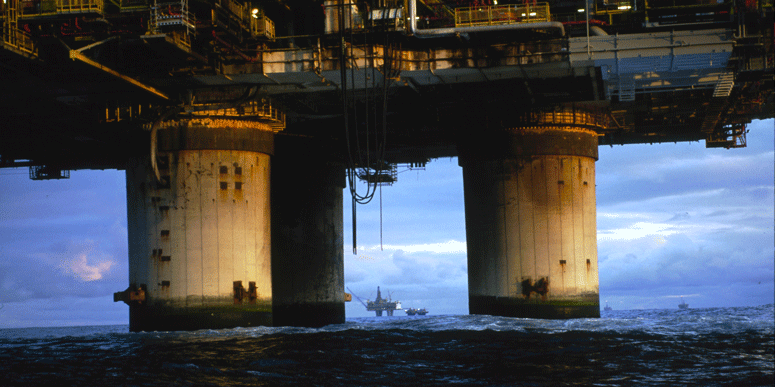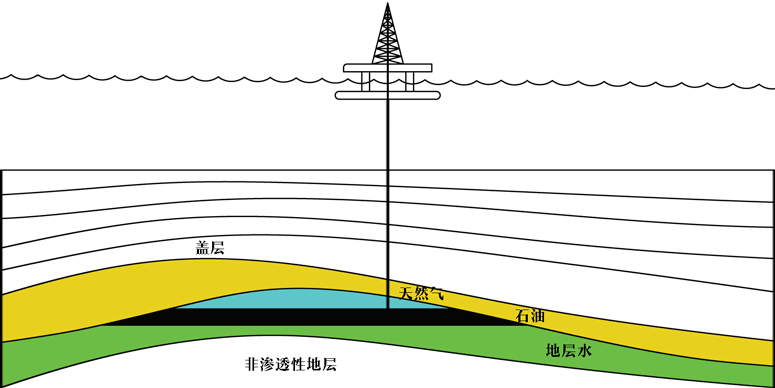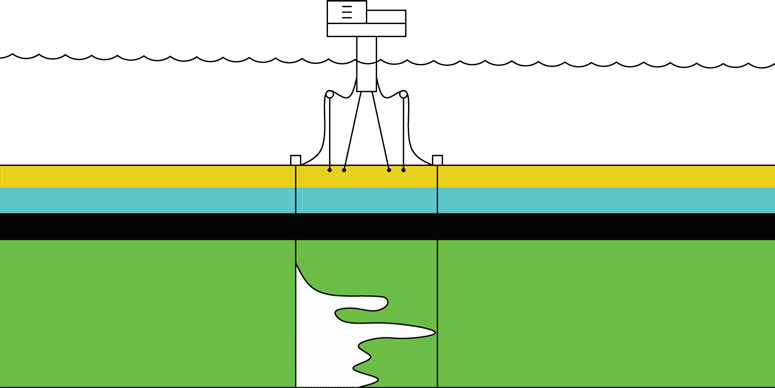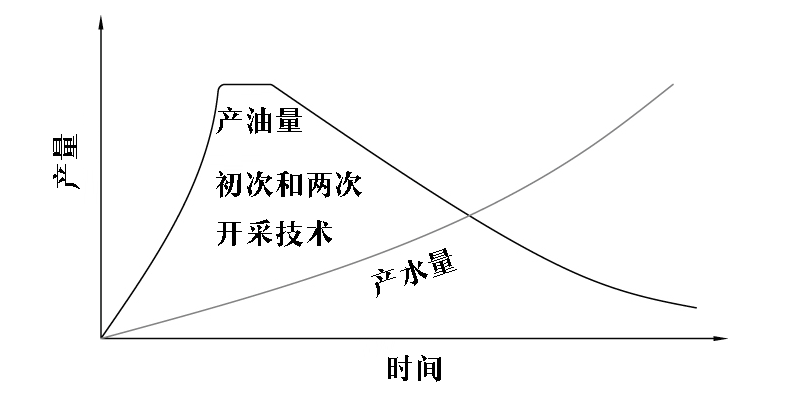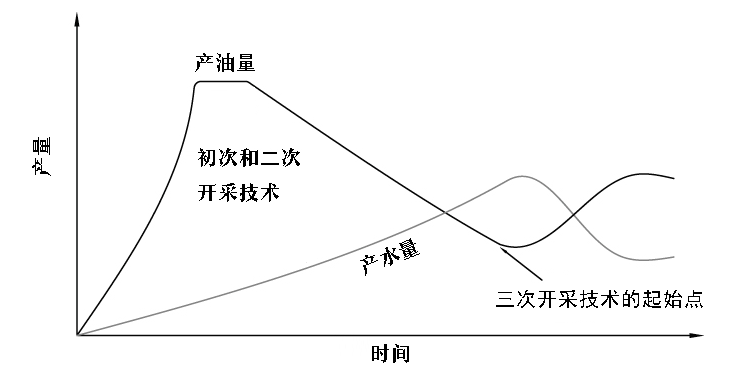An important source of oil is subsurface pools of hydrocarbons contained in porous or fractured rock formations. These pools form and are sealed in geological faults and have aninherent pressure because of the weight of the earth covering them.
When the pool or reservoir is discovered and the hydrocarbon extraction commences, this pressure gradually decreases. This inherent pressure will cause free flow of the oil to production facilities. This process is known as primary recovery. As the pressure decreases, however, so does the flow. This decrease in flow is caused by lower driving pressure. In some wells, it is exacerbated by the reservoir reaching the bubble pressure, causing dissolved gases to come out of solution and rise with the oil, which reduces the capacity of the pipe from the reservoir to the production facility.
Increasing Pressure
Primary hydrocarbon recovery can be improved by either installing lift pumps or using gas lifts. Another method is to maintain the reservoir pressure at its optimum production pressure by injecting a gas (such as carbon dioxide, nitrogen or liquefied petroleum gas [LPG]) or liquid—typically some form of water—to replace the extracted oil. For offshore locations, seawater is often used with or without additives.
In many cases, simply re-pressurising the well is not enough. Ideally, the injected medium should push the oil toward the production well and actively separate the oil from the rock. This is complicated, because the rock formation in which the oil is stored is not normally homogeneous. Typically, formations have areas of high and low permeability intermingled with faults and cracks. The injection medium tends to take the path of least resistance, which can result in breakthrough of the injection medium into the producing well when it has short-circuited between the injection point and the production well. Infill wells may also be used, though these are generally considered too expensive for offshore applications.
The injection medium, coupled with pre-existing water and gas deposits in the formation, results in produced water or gas in the production well. This produced water or gas needs to be treated before being recycled or discharged.
While every reservoir is different, a simple overview of the life of a field shows the gradual increase in output as the field is developed. The introduction of new production and injection wells results in a gradual increase in output until an optimum output is achieved.
Initially, the output of produced water resulting from injection should be low or negligible, but a gradual increase occurs. After a period of time, the optimum output from the reservoir begins to decrease. Eventually, the amount of produced water or gas may exceed the amount of oil produced. Given the cost of handling the produced medium in terms of re-injection or disposal, the ratio of oil provides a decreasing marginal return that operators must consider when deciding on the viability of ongoing production requires to be set.
Secondary Recovery Techniques
To mitigate the decline of the reservoir, engineers deploy secondary recovery techniques such as gas injection, waterflooding or enhanced oil recovery (EOR). EOR includes oil recovery enhancement methods using sophisticated techniques that alter the original properties of the oil. The three major types of EOR operations are chemical flooding (alkaline flooding or micellar-polymer flooding), miscible displacement (carbon dioxide [CO2] injection or hydrocarbon injection) and thermal recovery (steamflood or in-situ combustion).1
These require various tools such as:
-the use of water alternating gas injection (WAG) to create moving layers of medium density and quality within the reservoir;
-CO2 and steam to alter pH and temperature;
-steam mixed with solvents;
-low-salinity seawater;
-microbial EOR techniques (MEOR);
-foams;
-surfactants;
-polymers;
-mixtures of the tools, such as foam-assisted WAG (FAWAG).
New wells are also routed and designed to provide multiple injection and extraction points per well since the methods of formation survey provide clearer insights into the layout of the formation.
The quality of seawater specified for injection is based on the reservoir’s and formation’s requirements, such as the resultant pore sizing, chemistry and the density of the oil. The level or treatment the seawater receives is therefore varied from the most basic course filtration down to nano filtration (NF) or reverse osmosis (RO). NF is applied to reduced sulphate injection to minimize scaling due to interaction with barium and strontium deposits and/or souring due to the prevalence of sulphate reducing bacteria. RO permeate is used for low salinity injection systems on the understanding that low salinity water can cause the electrical double layer around reservoir clay particles to expand, drawing monovalent cations to the negatively charged clay surface and displacing the divalent ions that attach hydrocarbon molecules, causing them to detach from the clay surface into the water.
Seawater Filtration
The design of NF and RO membranes systems and their own pre-treatment requirements, such as media or membrane based ultra-filtration, result in the provision of plant that is suitable for incremental blocks of output. Their design throughput is based on a projected maximum injection requirement.
The size of the incremental blocks (train sizing) that make up the design throughput is influenced by the injection gradients of the reservoir profile, the downstream injection pump flow range, installation cooling requirements, available utilities and space.
Membrane systems are designed for the product created at the end of a three-year lifespan. Three years is the typical membrane warranty period. The water quality from the first use of the new membranes until the third year is, therefore, significantly better than the actual quality specified.
To avoid introducing oxygen into the process, such as in induced gas flotation (IGF) separators, recycled gas is used. However, water sourced from the environment for injection, such as seawater, requires deaeration.
Gas stripping, vacuum and membrane-based deaeration systems are used. However, the towers, while simple and reliable, are large and heavy. Membrane systems, while better suited for offshore applications in terms of size and weight, need more care. Vacuum systems are historically more common. However, their positioning in membrane systems and their relationship with the needs of downstream systems, such as the pump net positive suction head available (NPSHA) and system materials, require careful consideration to maximize their application advantages.
The production profile typical shows that the production related capability of any injection treatment system requires flexibility to meet lower- and higher-than-expected injection demand to keep the injection water treatment system from being either inefficient or a bottleneck to production. The production from the well, which is often a mixture of oil, gas, water and solids, needs to be processed into individual streams. In some installations, the separated oil is mixed with low-salinity water (desalting), making it more valuable before again being separated into individual streams. The efficiency of the separation processes are further factors in the oil value. The resultant wastewater that has been extracted from the oil is then re-Injected or released to the environment.
In either case, the wastewater will need further treatment. Re-injection is usually the least stringent option in terms of water quality requirements. Traditional methods of separation and treatment include dissolved air flotation (DAF), induced gas flotation (IGF), corrugated plate interceptors (CPI), separators and other flotation devices; knock-out drums; hydro-cyclones; and media including nutshell filters. Ceramic membranes are a relatively new, but efficient technology this tertiary treatment.
Water treatment systems represent a sizeable investment in capital and operating costs, resulting in a continued drive to optimize the design of these systems. To meet the industry demands, one company developed a system with a footprint reduced by housing the membrane filtration elements in the same vessel as the NF/RO. This layout optimization results in the smallest footprint and lightest system design.
A diverse range of technologies now exists to meet the need for increased recovery of oil. These technologies have continued to develop to allow a larger proportion of the hydrocarbons to be recovered from the reservoir. Equipment manufacturers and system suppliers will be at the forefront of this drive to maximize future developments.

 石油圈
石油圈